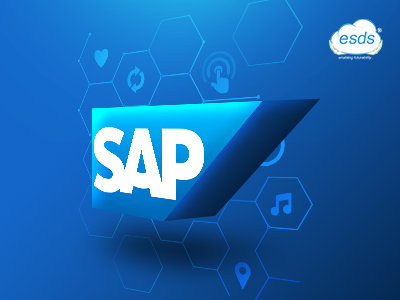SAP Integration with IoT: Your Powerful Enterprise Merger
Traditionally, enterprises have had difficulty modernizing their outdated ERP environments to SAP while ensuring seamless data migration. Besides, organizations are typically concerned about hiring more staff to maintain data because of the high transaction load posting in SAP. Increased latency problems that limit agility to respond to market possibilities and escalating expenses result from this scenario. These factors urge businesses to go past cord-cutters and adopt new-age digital technologies to energize their shift to SAP.

The answer lies in SAP integration with the Internet of Things (IoT). The Internet of Things (IoT) is simple – interconnected physical devices that can monitor, send or exchange data. It fits today’s need for connectivity of all parts in the value chain and real-time visibility in a perfect way. It facilitates automated data retrieval, storage, and analysis for data and event monitoring and predictive analysis. In terms of automatic data integration, real-time monitoring, and streamlined business processes, SAP integration with IoT capabilities can build a unified data-centric ecosystem that can add an impetus to digital transformation journeys. What we refer to as an agile and intelligent enterprise is made possible with SAP IoT.
Here we explore how SAP and IoT can scale innovation with growing data workload quantities.

1. The Automated Collection and Processing of Data
IoT has a differentiated ability to integrate intelligence into SAP settings. The technology underlines the use of sensors across multiple lines of business to bring about real-time insights. Organizations exploit these insights, free up employees’ time for analysis and decision-making, and reduce workload backed by automated data collection and processing. The consensus, therefore, is clear—IoT is significantly transformational to enable intelligent data environments inside SAP and amplify business outcomes at scale.
2. Real-Time Monitoring with Asset Management
Business environments are increasingly complex and continually exposed to ever-evolving threats. If not duly mitigated, an operational vulnerability could result in unprecedented business loss. Therefore, enterprises are rushing to take advantage of the great SAP integration with IoT to enable real-time monitoring—specifically, in terms of machine status and performance metrics. By monitoring assets and extracting usable intelligence, organizations can continually view business processes, correlate events, and spot anomalies before they occur. As a result, they can predict impending failures and performance downtimes at hand and act immediately to avert disruption and cost overruns.
3. Streamlined Business Processes
The synergy of IoT and SAP integration has manifested all sorts of growth signs for enterprises and enables various disruptive business models. With IoT in action, organizations can gather and analyze vast volumes of data to separate meaningful insights from the noise. This can help them anticipate trends and behaviors in the digital world and reinvent their business processes to tackle disruption head-on. Furthermore, the movements can be aligned with their growth strategies to handle upcoming innovation and sustain business viability.
4. Remote-Facility Management
IoT and SAP integration has brought new possibilities to streamline remote facility management and can help enterprises attain the status of fully functional intelligent enterprises. The technology, just as we know, enables advanced data environments that break down silos and connects remote operations for unparalleled insights. This technology could boost factory visibility, and enterprises can continually identify performance behaviors, forecast what’s lying ahead, and prevent risks. As a result, they can keep the aging inventory in check, optimize cost consumption, comply with changing compliance standards, and ward off security breaches—with ease and precision.
The IoT landscape is maturing at warp speed. Technological developments are constantly in a state of flux. Given such a mercurial atmosphere, it’s essential to conceive a data strategy with an agnostic coverage of SAP technologies. Internet of Things (IoT) and SAP integration simplify data transfer and help drill down into insights to detect behaviors and patterns, which, when further exploited, can support business learning, decision-making, and performance uptime. Organizations must analyze data at their disposal and identify adaptive technologies that can amplify intelligence. Flexibility can help enterprises drive transformation change in sync with technological changes and minimize disruption.
Focus IoT resources over a single area of the SAP landscape to assess value deliverability. Building a pilot project or establishing a proof of concept is a starting point. Once we succeed and realize the value, we can create a transformation strategy and build more on the momentum and scale organically.
Your Mission-Critical SAP Just Got Easier With ESDS

Keeping SAP ERP systems efficient and cost-effective requires seamless data integration as organizations strive to remain competitive. Small and medium-sized organizations can use the highly flexible cloud platform from ESDS to implement their SAP systems. ESDS has a substantial clientele, with more than 200 clients and more than 50 migrations. It has more than 5000 HANA instances, 300 administrators, 10+ technical certifications, and more than 30+ disaster recovery installations. In addition, SAP professionals with in-depth knowledge and experience are available around the clock at ESDS to help you.
- 6 Ways AI Reinvents the Security Landscape - January 9, 2024
- Top 6 Current Cybersecurity Trends For 2024 - January 9, 2024
- What Have We Learned from The Recent Cybersecurity Incidents? - January 3, 2024
